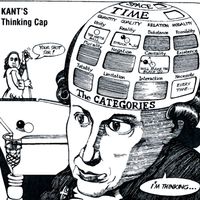A Tree Falls in the Forest: A Neuroscientist on the World Our Brain Creates
“To be is to be perceived.” So wrote George Berkeley in the 1734 edition of his A Treatise Concerning the Principles of Human Knowledge. Intent on uncovering and refuting those principles leading to skepticism — and of particular concern to the Bishop of Cloyne was skepticism about God — Berkeley developed a theory that only minds and their ideas are real. Suppose you have a Granny Smith apple. You see its greenness and roundness. You feel its smoothness and weight in your hand. You hear the crunch as you take a bite. You taste its tangy tartness of the apple’s juicy flesh. And then you smell the scent peculiar to green apples. Now, what is the apple itself?
Berkeley’s argument, in a nutshell, goes something like this: My idea of an apple just is the collection of sensations I have: this green sensation, this crunchy sensation, this tart sensation, and so forth. Since there is no way for me to separate myself from my idea in order to compare it with the object — “an idea can be like nothing but an idea” — I conclude that the object just is the idea I have. Ideas are mind-dependent. So also, objects are mind-dependent. On Berkeley’s view, it’s nonsensical to talk, for example, about an apple falling from the tree independently of our perception. After all, the talk involves a distinct perceptual act, namely calling up images of a tree, an apple, the apple at successive points as it falls, and so on. So, even if Newton isn’t there to get bonked on the head by the falling apple, thinking about it involves perception of the relevant objects and events.
Philosophers have long puzzled over the problem of representative perception, that is, how our perceptions represent their objects. They’ve also puzzled over how to prove the existence of a mind-independent world of things like tables and chairs and dogs and storms. And they’ve puzzled over identity — the persistence of things over time. Some are committed to a mind-independent reality while others think such a position is folly. Work by neuroscientists is increasingly providing clarification on what it means to say that the mind — the brain, more precisely — creates our world.
In his 2019 book, The Case Against Reality: Why Evolution Hid the Truth from Our Eyes, University of California Irvine vision scientist, Donald Hoffman, pulls together years of interdisciplinary research results to argue that much of our experience is constructed as an evolutionary survival strategy. Perception is a sort of “user interface” for navigating the world. It’s not that Hoffman thinks, as Berkeley does, there is no reality apart from minds and their ideas, but rather that our reality is the mediated result of how our brain works on the material provided by sensation. So, perception is a very useful illusion.
The core of Hoffman’s work aims to understand what the philosopher, David Chalmers, coined “the hard problem of consciousness.” Using computer modeling, Hoffman wants to disprove the current view of consciousness as the result of neuronal activity, and instead show that the causal direction is actually the reverse: “If we construct everything we see, and if we see neurons, then we construct neurons. But what we construct doesn’t exist until we construct it…So neurons don’t exist until we construct them.”
In an episode of the PBS series, “Closer to Truth,” Hoffman discusses implications of generating a “mathematically precise model of consciousness on its own terms,” rather than trying to get to consciousness from the starting from a physio-functional view of the brain. According to Hoffman, the correct model should yield quantum physics, which in turn could solve the mind-body problem. In a recent paper, “Fact, Fiction, and Fitness,” Hoffman, along with interdisciplinary co-authors, concludes that the ‘interface’ picture of consciousness is the correct. More specifically, the study shows that natural selection shapes the structure of experience, which is to say that species-specific perceptual systems are “interfaces that guide adaptive behavior.”
The interdisciplinary nature of Hoffman’s research into consciousness — including mathematics, the neuroscience of vision, quantum physics, evolutionary game theory, and computer modeling — reveals the complexity of the hard problem. The novel nature of Hoffman’s theory, namely that a precise mathematical model of consciousness will explain, among other things, how the brain constructs reality, is reminiscent of Immanuel Kant’s own ‘Copernican revolution.’ In his groundbreaking work, Critique of Pure Reason, first published in 1781, Kant argued that the structure of human cognition creates what we call experience. Prior to any empirical concept, say a Granny Smith apple, cognitive structures — space, time, and categories of the understanding — work on the raw materials. The result, the experience of the apple, is peculiar to anything with the same cognitive apparatus. But whereas Kant does not attempt to explain how and why we have the apparatus, Hoffman does. If he’s correct, there are profound implications for spirituality, the mind-body problem, artificial intelligence, and even practical considerations like marketing and politics.
Sources: UCI News, The Atlantic, Scholarpedia, The MIT Press Reader, Entropy, Quanta Magazine, & Physics World









